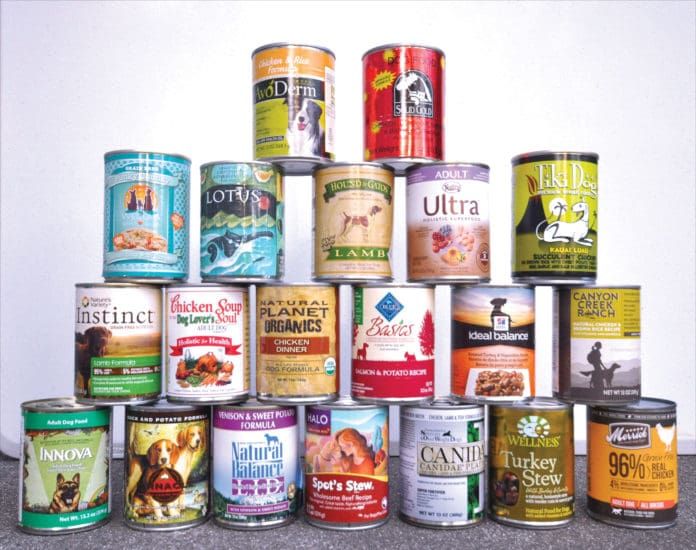Price is the most commonly cited reason that people prefer to feed dry food to their dogs; canned food is far more expensive to feed than dry food. Owners of large dogs or multiple dogs rarely feed canned food as anything other than an occasional treat, for this reason alone.

288
Of course, there are other objections, too. Many dog owners report that they don’t like the odor of wet food, or the extra work involved in opening the container and serving an appropriate amount – and the hassle of having to store any amount still in the container in a refrigerator for the next meal. And a persistent minority of dog owners worry that dogs who eat only canned food will have more dental problems (such as a buildup of tartar and resulting gum inflammation) than a dog who eats kibble.
These concerns vary in validity.
It’s impossible to counter an objection to the high cost of wet food; it simply is far more expensive to feed canned food than it is to feed kibble. Wet food obviously contains a lot of water, so you have to feed more of it (in terms of weight and volume) than dry food to deliver the nutrients your dog requires. Because it’s so heavy, it’s far more expensive for the pet food companies and distributors to ship wet food than dry food, too.
That said, the cost of feeding top-quality canned food is comparable to the cost of feeding commercial raw frozen or dehydrated diets – and lots of people find a way to pay for those foods. I go into greater detail about this in The Whole Dog Journal 2013 Canned Food Review, WDJ December 2013.
I’m not sure I could sympathize very deeply with someone who didn’t want to feed wet food to a dog who would clearly benefit from that type of diet due to the off-putting aroma of the food, or the inconvenience of opening cans or storing opened-but-not-emptied pouches. Maybe if the owner was pregnant or chronically nauseated, and there was no one else to take over the dog-feeding job?
The dental objection, though: That one is bogus. I know that at least one of the dog food companies have conducted studies demonstrating that dogs who eat special “dental health” kibble end up with less tartar on their teeth than dogs fed another diet. But it’s pretty widely recognized that few (if any) dogs chew kibble well enough to scrape anything off their teeth – and especially off the exterior sides (cheek sides) of their teeth, where tartar is most likely to accumulate. If anything, crunching kibble can lodge pieces of the carbohydrate-laden food between the dog’s teeth, where those carbs get broken down into sugars and contribute to the development of dental plaque.
Wet food lacks any sort of abrasive material, but the better products also contain far fewer (if any) carbohydrates, the main contributor in a dog’s diet to the accumulation of dental plaque. Ideally, dogs chew and scrape their teeth clean by being given regular opportunities to chew appropriately sized fresh, raw bones in a supervised setting.
For the complete Whole Dog Journal review on canned dog food, including the 2013 Approved Canned Dog Food List, check out The Whole Dog Journal 2013 Canned Food Review, WDJ December 2013.






